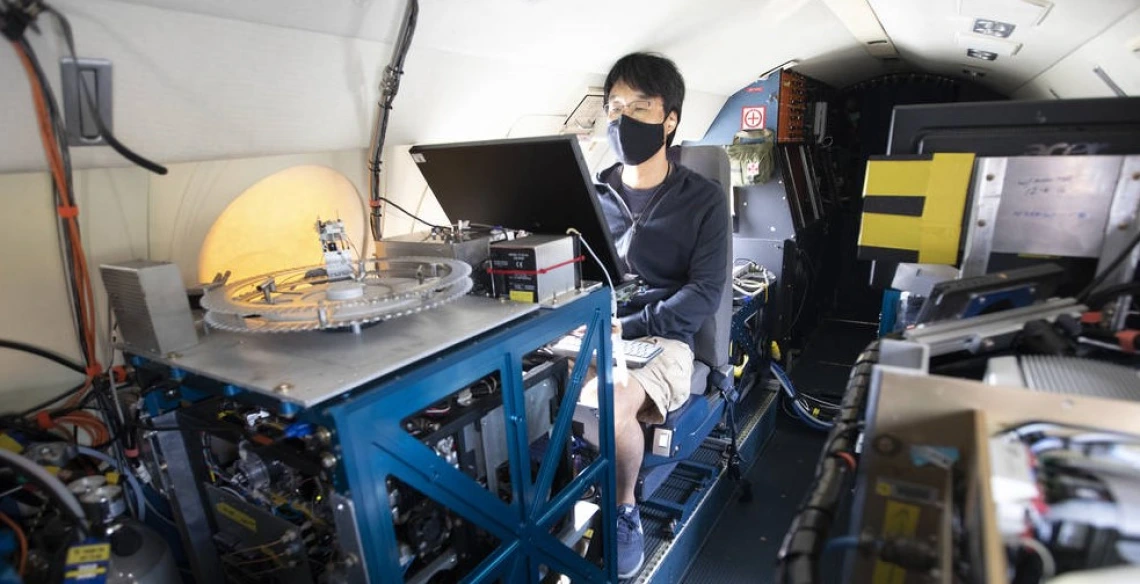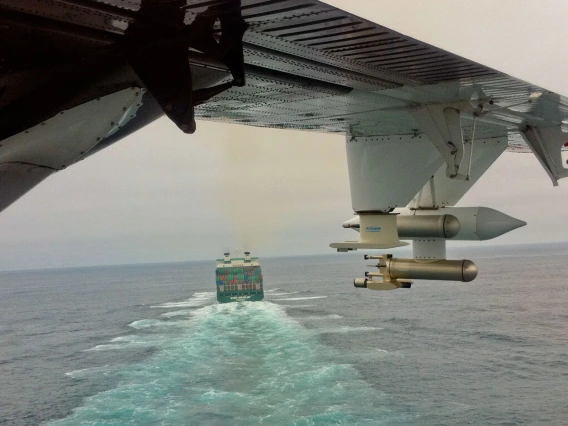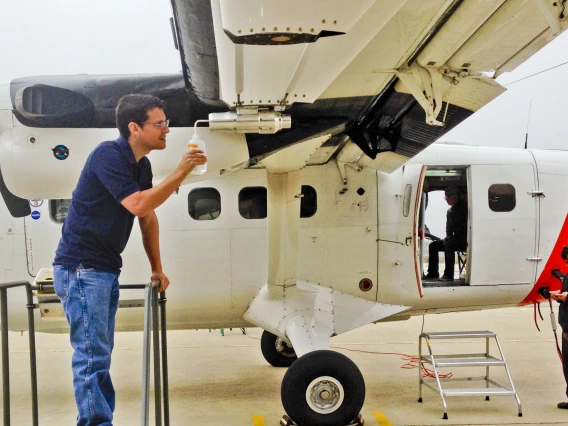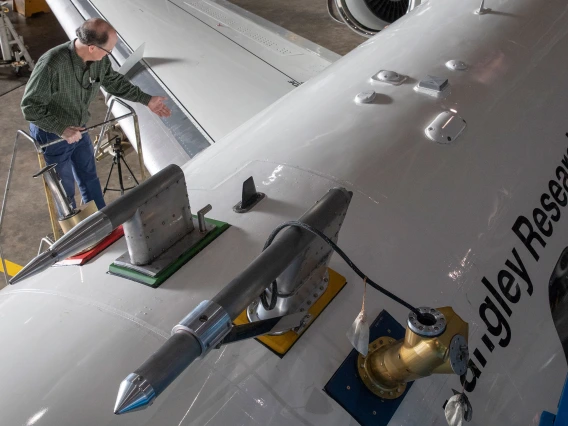ACTIVATE Makes a Careful Return to Flight
Chemical and environmental engineering professor Armin Sorooshian continues leading a multimillion dollar NASA mission from home during the COVID-19 pandemic.

Masks are part of the safety protocol for ACTIVATE scientists. Here, Yonghoon Choi prepares for a science flight on the HU-25 Falcon. (NASA / David C. Bowman)
Five months ago, with COVID-19 disrupting life across the globe, it seemed virtually unthinkable that a major NASA airborne science campaign would fly again anytime soon.
But today, that's exactly what's happening.
In August, NASA's Aerosol Cloud Meteorology Interactions Over the Western Atlantic Experiment, or ACTIVATE, eased into its second set of 2020 science flights out of NASA's Langley Research Center in Hampton, Virginia.
Those flights are taking scientists over the western Atlantic Ocean to study how atmospheric aerosols and meteorological processes affect cloud properties. In addition, modelers will use data from these flights to better characterize how the clouds themselves, in turn, affect aerosol particle properties and the amount of time they spend in the atmosphere, as well as the meteorological environment. Coordinated flights between a King Air and an HU-25 Falcon allow researchers to fly above, below and through the clouds with a suite of instruments that can take measurements remotely, or from the air around the aircraft.
"The data have been really good so far," Armin Sorooshian, ACTIVATE principal investigator and an professor of chemical and environmental engineering at the University of Arizona, said of the summer flights. "We've seen some interesting features, like smoke from the wildfires on the West Coast."
That smoke can seed clouds over the Atlantic Ocean.
Sorooshian is leading the campaign remotely from his home in Tucson, Arizona, where he and his wife are juggling work and the care of two children — a two-year-old boy and a baby girl who was born in July.
He admits it's "a little tough." But in a world where these flights could have been scrubbed from the calendar completely, Sorooshian isn't interested in dwelling on the negatives.
"They're good problems," he said.




